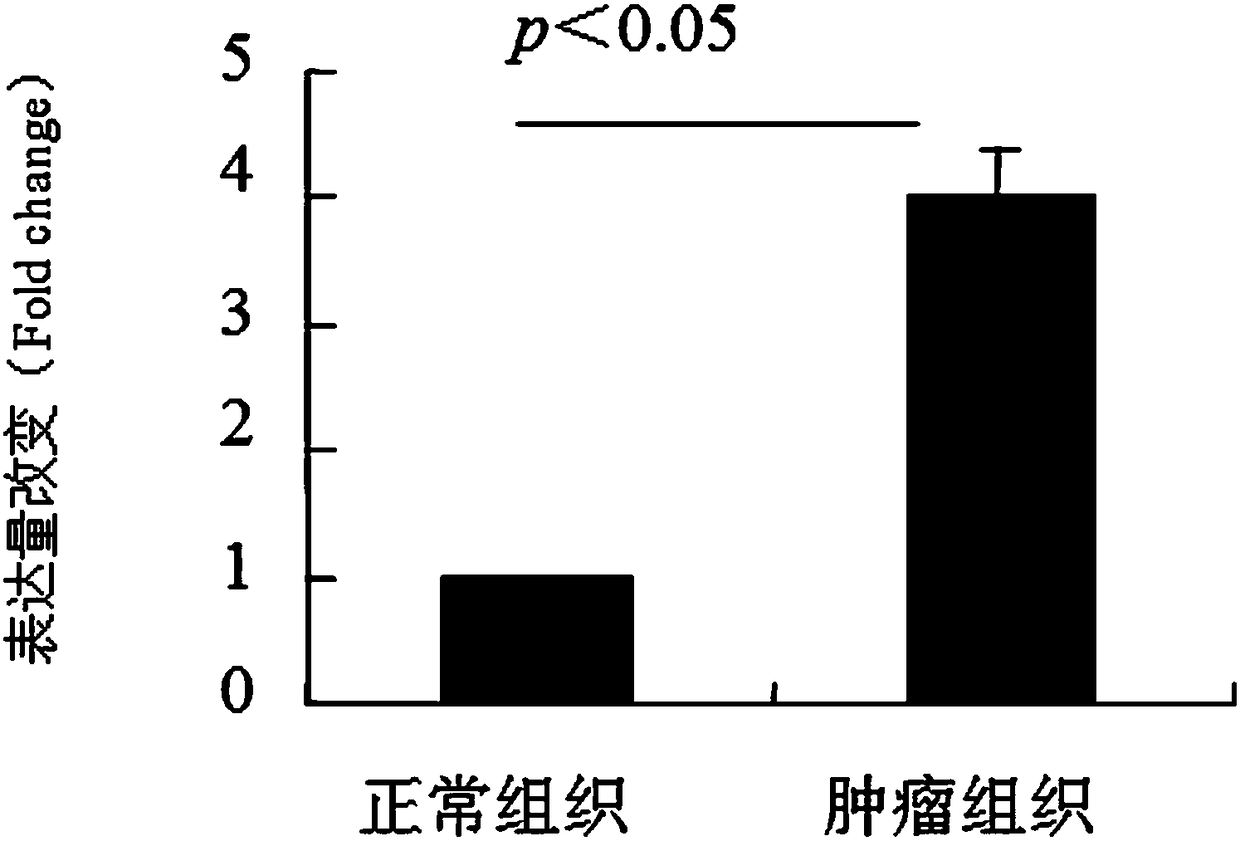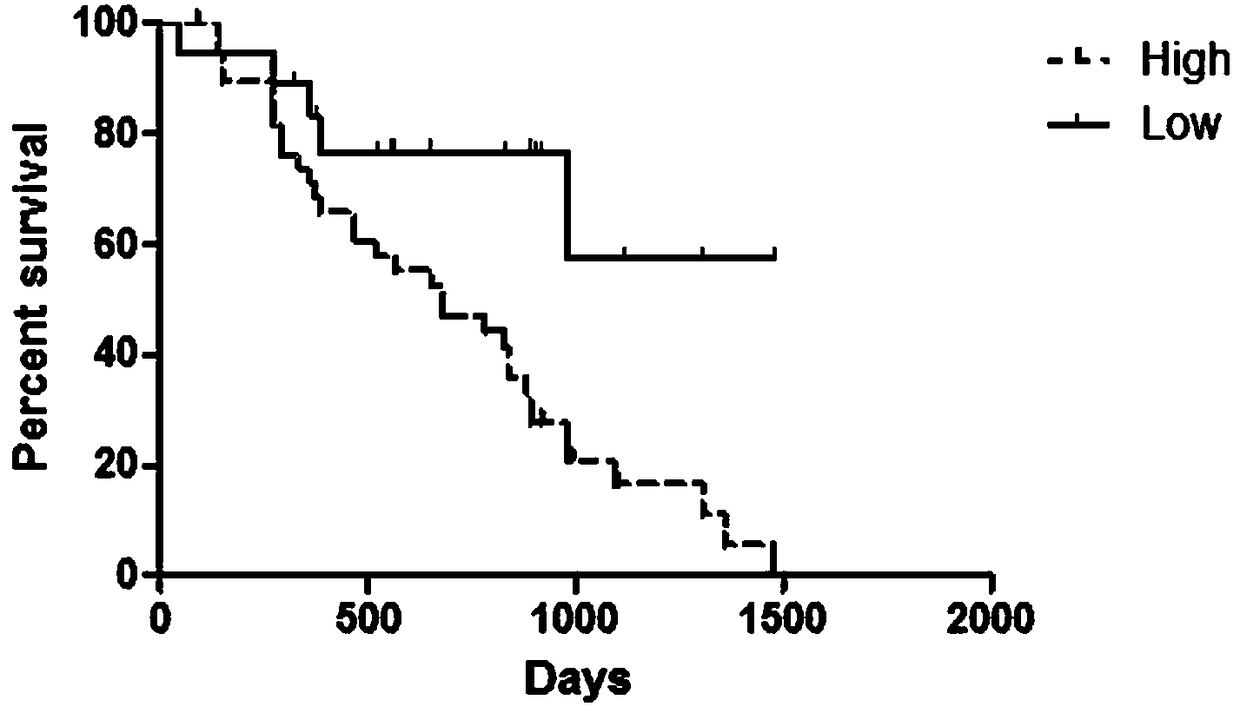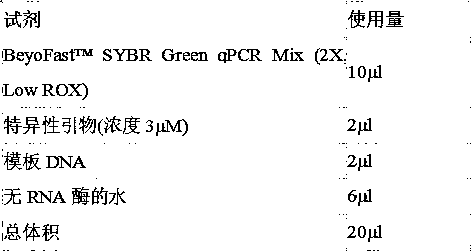Application, kit and detection method of novel molecular marker non-coding RNA LINC00671 for prognosis of kidney cancer
A molecular marker and non-coding technology, applied in the field of tumor molecular biology, can solve the problems that have not been reported, and achieve the effect of improving survival rate, improving postoperative quality of life, and far-reaching clinical significance
- Summary
- Abstract
- Description
- Claims
- Application Information
AI Technical Summary
Problems solved by technology
Method used
Image
Examples
Embodiment 1
[0020] Example 1: The application of non-coding RNA LINC00671, a novel molecular marker for prognosis of kidney cancer, in the preparation of preparations for predicting the prognosis of kidney cancer patients. The marker non-coding RNA LINC00671 is used to prepare preparations for the prognosis of kidney cancer patients to predict the condition of kidney cancer patients.
Embodiment 2
[0021] Example 2: Preparation of reagents for detecting the expression of non-coding RNA LINC00671 for the preparation of a kit for the prognosis of renal cancer patients (for 30 reactions) 1. Trizo 120ml
[0022] 2. Inhibit RNA degradation solvent 40ml;
[0023] 3. Chloroform 80ml;
[0024] 4. 80ml of isopropanol;
[0025] 5. DEPC water 10ml;
[0026] 6. 100 μl of a mixture of 10× random primers and Oligo dT primers;
[0027] 7. 150 μl of 5× reverse transcription reaction buffer;
[0028] 8. 100μl of 10mM deoxyribonucleotide triphosphate base dNTP containing Mg2+;
[0029] 9. 200U / μl M-MLV reverse transcriptase 50μl;
[0030] 10. SYBR Green qPCR Mix 500μl;
[0031] 11. 3 μM target gene LINC00671 specific primer (its sequence is shown in SEQ NO:2 and SEQ NO:3) 50 μl;
[0032] 12. 50 μl of 3 μM internal reference gene TUBA1A-specific primer (its sequence is shown in SEQ NO:4 and SEQ NO:5).
Embodiment 3
[0033] Example 3: Detection of non-coding RNA LINC00671 in tissue samples
[0034] 1. Collect the kidney cancer or normal control tissues to be tested, wash them with normal saline, put them into a cryopreservation tube filled with a solvent that inhibits RNA degradation, and put them in a -80°C refrigerator for later use.
[0035] 2. Extraction of RNA in tissues:
[0036] (1) Add liquid nitrogen to the mortar first, then cut the tissue into small pieces and grind it into powder in liquid nitrogen, take 100mg of tissue powder with a liquid nitrogen pre-cooled spoon and add it to the EP tube filled with 1ml of Trizol solution In the process, the total volume of the tissue powder should not exceed 10% of the volume of the Trizol used, and it should be fully mixed evenly;
[0037] (2) Leave at room temperature for 5 minutes, then add 20 μl of chloroform, cap the EP tube tightly and shake vigorously for 0.5 minutes, then centrifuge at 12,000 rpm for 10 minutes;
[0038] (3) Take...
PUM
 Login to View More
Login to View More Abstract
Description
Claims
Application Information
 Login to View More
Login to View More - R&D
- Intellectual Property
- Life Sciences
- Materials
- Tech Scout
- Unparalleled Data Quality
- Higher Quality Content
- 60% Fewer Hallucinations
Browse by: Latest US Patents, China's latest patents, Technical Efficacy Thesaurus, Application Domain, Technology Topic, Popular Technical Reports.
© 2025 PatSnap. All rights reserved.Legal|Privacy policy|Modern Slavery Act Transparency Statement|Sitemap|About US| Contact US: help@patsnap.com



